Star Dust
Brief Synopsis
Cast & Crew
Walter Lang
Linda Darnell
John Payne
Roland Young
Charlotte Greenwood
William Gargan
Photos & Videos
Film Details
Technical Specs

Synopsis
At Grauman's Chinese Theatre, Amalgamated Pictures, Inc. previews Dancing Debutante , starring its latest discovery, Lorraine Lorey. Thomas Brooke, an ex-film star who is now Amalgamated's top talent scout, nervously awaits the crowd's response to his find. The film and Lorey are a hit, much to Thomas' and acting coach Lola Langdon's pleasure. Dane Wharton, the studio boss, congratulates Thomas, but needles him about the starlet he had stolen from Dane years before. Thomas heads off on another talent search. On a train in Arizona, he discovers singing football star Bud Borden and offers him a screen test. Bud doesn't believe Thomas at first, but agrees to consider his offer. At Randolph College in Rockville, Arkansas, Thomas' mission is discovered by co-ed Carolyn Sayres. Learning that Thomas is in an old opera house he had played years before, Carolyn sneaks an audition. Thomas is impressed but, upon discovering that she is the daughter of an old love, decides that she is too young and heads for New Orleans. Carolyn fakes a letter from Thomas to Dane, then mail it with her photo enclosed. Back at the studio, Dane, Thomas, Lola and casting director Sam Wellman examine the photos from Thomas' trip. Dane decides to test Carolyn, Bud and Mary Andrews, a singer Thomas discovered in Texas. The three are met at the Hollywood train station by Thomas, who forgives Carolyn her actions. At her hotel, Carolyn meets June Lawrence, Sam's latest discovery, who tells Carolyn that, unlike her, she has little chance of making it in films. Carolyn and Bud go out on the town together, and compare their feet to the stars' immortalized in cement at Grauman's Chinese Theatre. Carolyn, Bud and Mary have their screen test, then await the verdict in Sam's office. Sam, deciding that Thomas is having too much success, signs Mary, but sends Carolyn and Bud back home, despite their talent. Bud decides to stay in Hollywood and try the other studios. Carolyn wants to do the same, but is personally put on the train by Thomas. After turning around in San Bernardino, Carolyn returns to her old hotel room in Hollywood, where June asks her to answer her phone, as she is going away for the weekend. Carolyn discovers that Sam has cancelled all the other screen tests for a specific role. Bud arrives and helps Carolyn practice the role. Thomas enters, determined to send Carolyn home again, but when he learns of Sam's deception, he prepares a screen test. When Sam discovers this, he interupts the test and tries to have it destroyed, but Lola uses her old friendship with a lab man to save it. Thomas quits his job when Dane refuses to view Carolyn's test. Bud tells Carolyn he has a new test at another studio, but she tells him she is going home. At another premiere, Thomas and Lola sneak the test into the newsreel. It is a big hit with the audience and Dane, who immediately fires Sam. Back at her aunt's soda fountain in Arkansas, Carolyn and Bud complain about Hollywood until she gets a telegram from Thomas calling her back. In Hollywood, Sid Grauman places Carolyn's footprints in cement as Thomas, Lola and Bud look on. When Dane offers him a new test, Bud breaks his nose on a microphone.

Director

Walter Lang
Cast

Linda Darnell

John Payne

Roland Young

Charlotte Greenwood
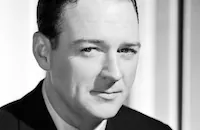
William Gargan
Mary Beth Hughes

Mary Healy
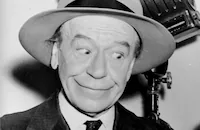
Donald Meek

Jessie Ralph

Walter Kingsford

George Montgomery
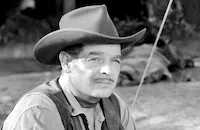
Robert Lowery
Hal K. Dawson
Jody Gilbert
Gary Breckner
Paul Hurst
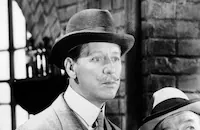
Irving Bacon
Billy Wayne

Fern Emmett
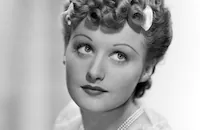
Lynne Roberts
Sid Grauman
Charles Tannen
Frances Morris
Kay Griffith
Amanda Duff
Victoria Vinton
Paddy O'flynn
Arthur Rankin
Charles Moore
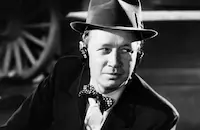
Eddie Acuff

Mantan Moreland
Robert Shaw
Tom Seidel
Lillian Porter
Iva Stewart
Louise Lorimer
Sherrie Overton
Mary Brodel
Dorothy Moore
Patricia Stillman
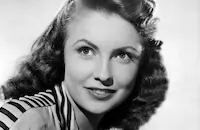
Joan Brodel
Betty-jean Hainey
Peggy Stewart
Frank Coghlan Jr.
Dick Winslow
Philip Morris
Jill Dennett
Gaye Sheridan
Harry Green
Tom Dugan
Elise Knox
Sarah Edwards
Jimmy Butler
Crew
Otto Brower
Alfred Bruzlin
Gene Bryant
David Buttolph
Hoagy Carmichael
Richard Day
Kenneth Earl
Robert Ellis
Mack Gordon
Roger Heman
Albert Hogsett
Ivan Kahn
Thomas Little
Helen Logan
Kenneth Macgowan
Jesse Malo
Peverell Marley
Mitchell Parish
Robert Simpson
Mal St. Clair
Gwen Wakeling
Darryl F. Zanuck

Photo Collections
Film Details
Technical Specs

Articles
Star Dust (1940) - Star Dust
The story of young acting hopefuls who come to Hollywood for screen tests and acting careers, Star Dust is actually based on the early careers of Darnell, Dorris Bowdon, and Mary Healy. Bowdon acted in a handful of films in the late 1930s and early 1940s before retiring to have a family with husband Nunnally Johnson, while Healy acted in more movies and television and also has a part in Star Dust as Mary Andrews, a composite character based on herself and Bowdon.
Darnell, Bowdon and Healy all went to Hollywood after being discovered by talent scouts, but Darnell, who was only thirteen at the time of that initial trip, was told to return when she was older -- which is exactly what happens to her character in this movie. Already an in-demand model, Darnell was so supremely beautiful that most people simply assumed she was older than she really was. When she was sixteen, she returned to Hollywood and a Fox contract, and was promptly cast in Hotel for Women (1939), Day-Time Wife (1939) and Star Dust. Her career was off and running, with the big hits The Mark of Zorro (1940) and Blood and Sand (1941) soon to come.
Darnell's discovery and instant stardom caught the public imagination so strongly that Fox decided even before Hotel for Women to begin work on a script that would use her story as movie fodder. Even Darnell herself got caught up in the spell. At the time of Star Dust, she told a columnist, "When I wake up in the morning, I keep my eyes closed as long as possible. I'm afraid it will all fly away when I properly awake." Years later, she was more reflective: "At first, everything was like a fairy tale come true. I stepped into a fabulous land where, overnight, I was a movie star. In pictures you're built up by everyone. On the set, in the publicity office, wherever you go, everyone says you're wonderful. It gives you a false sense of security. You waltz through a role, and everywhere you hear that you are beautiful and lovely, a natural-born actress. You believe what people around you say."
At one point in Star Dust we see a screen test for Darnell's character -- an exact recreation of Darnell's actual, original screen test on a park bench a few years earlier. She even wears the same outfit. Darnell later recalled, "I had a little less accent and a little more poise [in the new screen test]. I think I was dazed when I played the [original] park bench test, but I was almost as scared in the Star Dust one, because by then I knew how much depended on it."
The screen test wasn't the only thing she performed once in reality and the other on screen. At the end of the picture, Darnell's character plants her hands and feet in cement at Grauman's Chinese Theater. Around the time of the film's release, Darnell did it again, for real.
Also in Star Dust are John Payne as another young acting hopeful, Charlotte Greenwood as an amusing acting coach, Roland Young as an agent, and William Gargan as a producer directly modeled on Darryl Zanuck. In one scene where Greenwood was required to rush into Donald Meek's office and stumble over Meek, who is on his hands and knees examining photos on the floor, she accidentally kicked him too hard and he went sprawling down on his face, skinning his nose and keeping him out of the movie for two days. Greenwood felt so bad she had flowers delivered to him twice a day until he returned.
The New York Times called Star Dust "unlikely to stem the westward migration of youngsters with hallucinations of swimming pools and a six-figure apotheosis to stardom.... Miss Darnell, in the leading role, is not only well behaved, but one of the more comely starlets. Mr. Payne is refreshing and breezy." Variety called the picture "a top B that will deliver as an A attraction in the majority of spots."
Darnell died in 1965 after a fire broke out in a Chicago area house where she had just been watching Star Dust on television in the middle of the night. The cause of the fire was never determined, though it may have been a stray cigarette. Darnell suffered extreme burns and smoke inhalation and died a few hours later. She was 41.
Star Dust was shot by cameraman Pev Marley, who would marry Darnell three years later.
Producers: Kenneth Macgowan, Darryl F. Zanuck
Director: Walter Lang
Screenplay: Kenneth Earl, Ivan Kahn, Jesse Malo (story); Helen Logan, Robert Ellis
Cinematography: J. Peverell Marley
Art Direction: Richard Day, Albert Hogsett
Music: David Buttolph
Film Editing: Robert L. Simpson
Cast: Linda Darnell (Carolyn Sayres), John Payne (Ambrose Fillmore/Bud Borden), Roland Young (Thomas Brooke), Charlotte Greenwood (Lola Langdon), William Gargan (Dane Wharton), Mary Beth Hughes (June Lawrence), Mary Healy (Mary Andrews), Donald Meek (Sam Wellman), Jessie Ralph (Aunt Martha Parker), Walter Kingsford (Napoleon in Screen Test).
BW-90m.
by Jeremy Arnold
Source:
Ronald L. Davis, Hollywood Beauty: Linda Darnell and the American Dream

Star Dust (1940) - Star Dust
Quotes
Trivia
Notes
The working titles for this film were Screen Test and Twinkle, Twinkle, Little Star. Hollywood Reporter reported that Sidney Lanfield was originally designated to direct this film, but was replaced by Walter Lang before production began. Hollywood Reporter also reported that Mal St. Clair acted as a second unit director for location work in Beverly Hills, California. According to the Twentieth Century-Fox Produced Script Collection at the UCLA Theater Arts Library, the original story of this film was a fictionalize account of the personal lives and backgrounds of actresses Linda Darnell, Dorris Bowdon and Mary Healy. This was Darnell's third film at Twentieth Century-Fox Film Corp. According to a Twentieth Century-Fox press release, the story of this film closely paralleled Darnell's own career at the studio, as she, too, was originally sent home as being "too young." In fact, the studio used her original screen test as the model for the screen test she does in the film. According to obituaries following Darnell's 1965 death, she had been watching this film on television when the Chicago house at which she was a guest caught fire. She died a few hours later as a result of the fire.
This was the first film that Charlotte Greenwood made since the 1932 Fox film Cheaters at Play. The actress, who had been very successful on the stage during the intervening years, was signed to a long-term contract by Darryl Zanuck after the completion of this film. According to a Twentieth Century-Fox press release, John Payne, who had been working as a free-lance actor at Warner Bros. Pictures and Paramount Pictures before this film, also signed a contract with Twentieth Century-Fox after the completion of this film. The Variety review made a special point of noting the similarities between the character of "Dane Wharton" and studio chief Zanuck. The Produced Script Collection also points out that Robert Cummings was considered for the role of Bud Borden.














